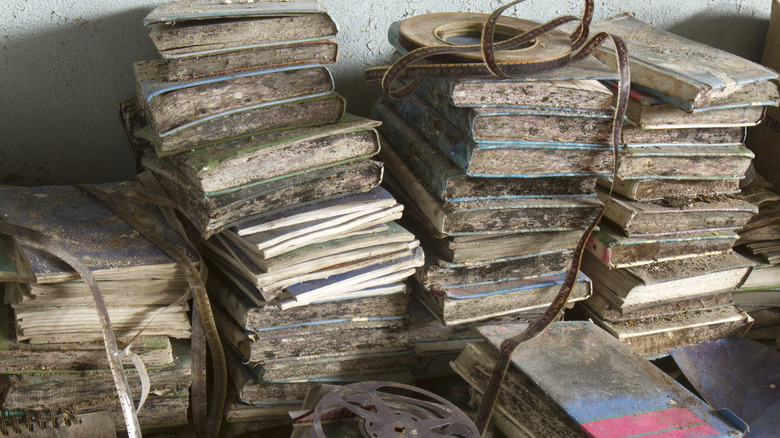Are There Any Advantages To Putting Moldy Books In The Freezer?
There are few things more devastating than realizing your prized first edition or precious family heirloom book has suffered water damage and is quickly growing mold. While you may assume that the book is destroyed and that it's best to discard it, there are actually ways to halt the mold growth and salvage your beloved book. Hard as it may be to believe, step one of saving a mold-damaged book often begins in your kitchen freezer.
Before you set off on your book preservation project, make sure you're taking proper precautions to protect yourself from mold. Wear gloves and a respirator to avoid exposure, as some types of mold can be toxic. If you aren't sure why or how your book got damp and moldy, check for other signs of the issue throughout your home. If it appears to be severe or widespread, call in a professional to get rid of your mold problem.
Using your freezer to halt mold growth on a book
If the mold problem seems to be limited to your bookshelf, begin by donning your protective gear and examining the moldy book. If the mold is soft and fluffy, you must stop the active mold growth before you attempt to clean the book. Amazingly, your freezer is the ideal tool for this task. While freezers don't actually kill mold, they do stop the growth. Freezers also work well when you don't have the time to clean and dry wet or water-damaged books immediately and don't want them to deteriorate. Placing the book in the freezer keeps mold from developing in the first place and buys you precious time to treat it properly or find professional help.
Before you freeze a moldy book, first wrap it in paper towels and then seal it and towels inside an airtight plastic bag. The plastic bag will ensure you don't have to worry about the mold contaminating your food. After the book has been frozen for at least 24 hours, the mold should become inactive. Now you can remove the book from the freezer and bag and begin cleaning off the dormant mold.
Clean the mold off your books
While the mold should be inactive after being in the freezer for 24 hours or more, you should still wear your protective gear while you finish cleaning your book. Make sure the book is fully dry, then vacuum off any loose mold using a vacuum with a HEPA filter. Next, working in a well ventilated area, wipe any remaining moldy areas with rubbing alcohol. Cotton swabs can be extremely helpful for getting into small creases or areas of the binding.
Once you've fully cleaned your book, be sure to dispose of any gloves, paper towels, and cotton swabs you used. Be aware that mold can be stubborn, and your book will be prone to mold problems even after this procedure. Check, and, if necessary, treat your book against mold as often as needed. While the freezing process may be worth it for a sufficiently financially or emotionally valuable book, it's unlikely to be the best course of action for your average mass-market paperback, which you may be better off just replacing instead.

